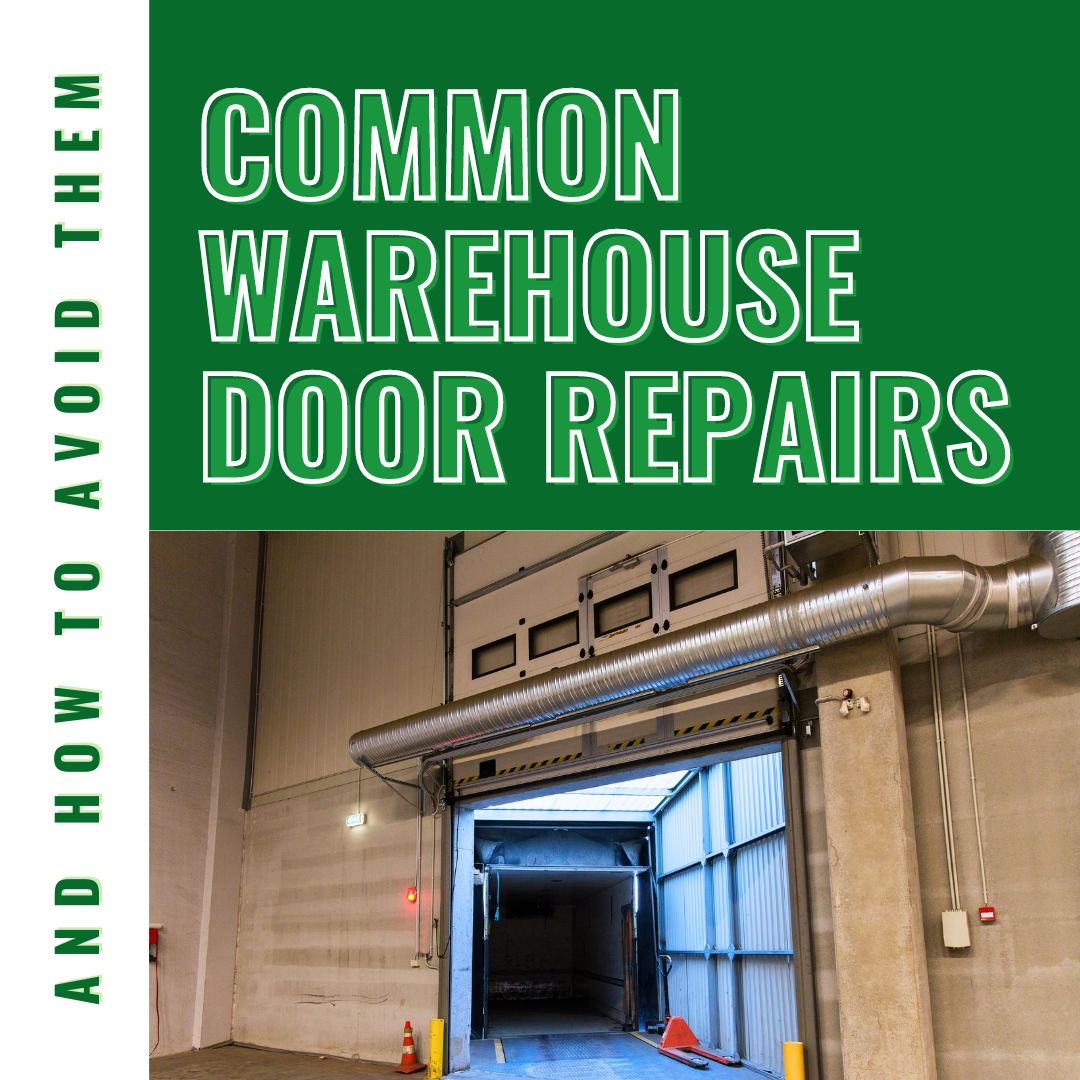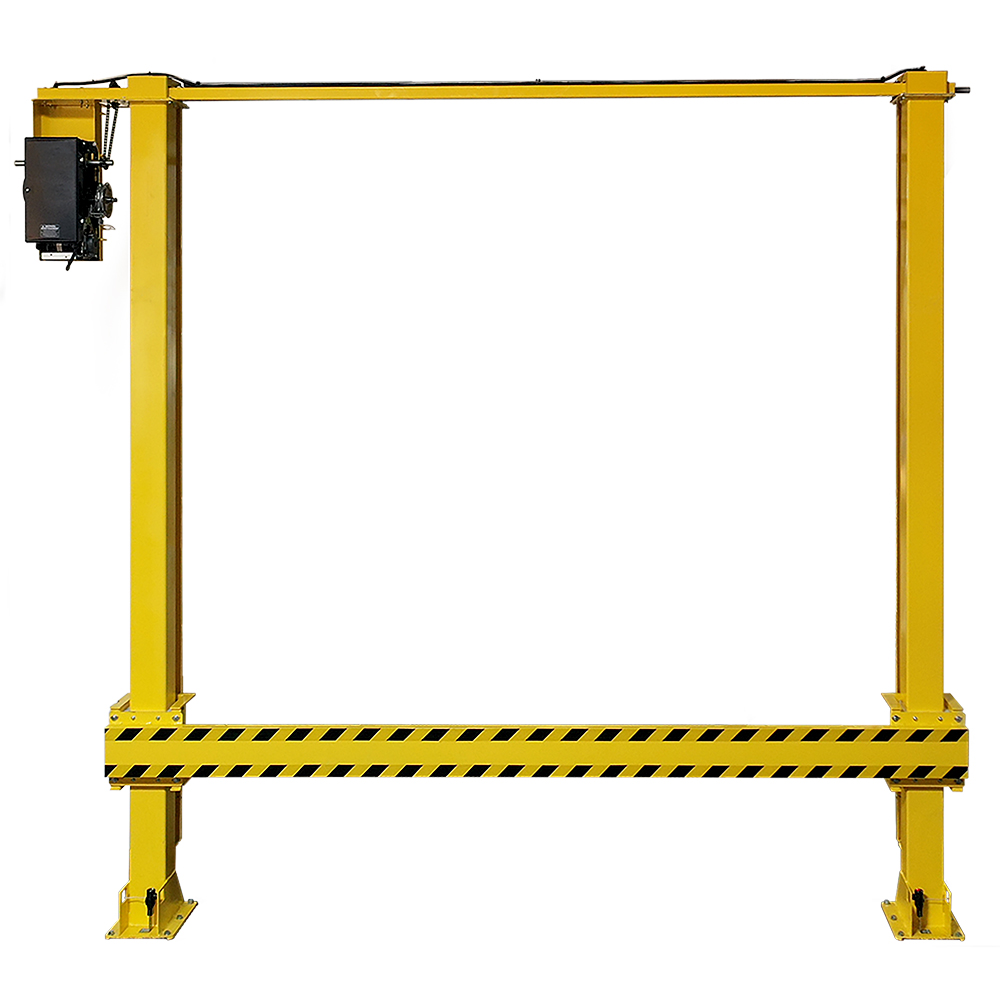We use cookies to make your experience better. To comply with the new e-Privacy directive, we need to ask for your consent to set the cookies. Learn more.
Common Warehouse Door Repairs (and How to Avoid Them)
Like all equipment, warehouse doors are prone to wear and tear. However, there’s a difference between normal, age-related issues — things like worn rollers and torsion springs — and avoidable damage.

Below, we’ll describe a few common warehouse door repairs and provide general advice for extending the lifespan of your equipment.
3 Common Sources of Warehouse Door Damage
1. Worn Cables and Torsion Springs
Torsion springs and cables provide the lifting action, so naturally, they’re responsible for most warehouse door issues.
Torsion springs are rated for about 10,000 cycles on average. That’s a decent level of durability — but busy facilities may need to replace their springs every few years. The heavy-duty cables that hold the door in position can also wear down, but they’re generally more resilient than the springs.
Know the common signs of cable and spring issues:
- Squeaking or whining sounds.
- Shaking when the door lifts or holds position.
- The door is hard to close, or it fails to stay in position when open.
If you notice any of these symptoms, stop using the door and arrange for a professional repair. A qualified technician can safely repair or replace the affected components.
2. Jammed or Worn-Out Rollers
Commercial door rollers can jam due to a lack of lubrication or due to impact damage (which we’ll address below). Unfortunately, the rollers usually need to be replaced, but it’s essential to act as soon as you notice issues — if the door can’t open and close easily, it’s a potential security risk.
Signs of roller damage include jamming and slow or irregular operation. Once again, you’ll need a professional tech to diagnose the issue.
3. Damaged Panels and Tracks
Damage to the panels and tracks of your commercial door usually occurs due to impact damage. A hit from a forklift or other piece of heavy equipment can easily lead to a hefty repair bill — and while replacing the affected track is a last resort, it’s often unavoidable.
It’s also important to note that panel damage isn’t a purely aesthetic issue. A damaged panel can impact the other components of your commercial door, so you’ll need to address the damage as soon as possible. 
Preventing Avoidable Damage to Warehouse Doors
Warehouse door repairs are expensive and should only be performed by experienced professionals. While you can’t do much about normal wear, you can limit your maintenance bills with appropriate outfitting.
Some general tips:
- Use structural bollards to create clear travel paths. Structural Bollards should be constructed of welded steel, and should have a durable yellow powder-coat finish. A well-placed bollard can provide an enormous return on investment by protecting warehouse staff and infrastructure.
- Invest in powered dock gates to prevent forklift accidents. A highly visible “goal-post" barrier, when installed near the door, will improve safety for both equipment operators and pedestrians. Solus Group carries Powered Dock Gates with simple push-button controls, which guard dock edges without a negative impact on efficiency.
- Follow OSHA’s standards for lighting requirements. The Occupational Safety and Health Administration (OSHA) requires forklift operating areas to be lit with an intensity of at least 2.0 lumens per square foot; less ambient lighting will raise the chances of an accident. Read more: Lighting Requirements for Forklift Traffic Areas.
Solus Group carries the equipment your facility needs to optimize efficiency and safety — and to protect your infrastructure from avoidable damage. To discuss options for your warehouse, contact us by calling 314-696-0200.
